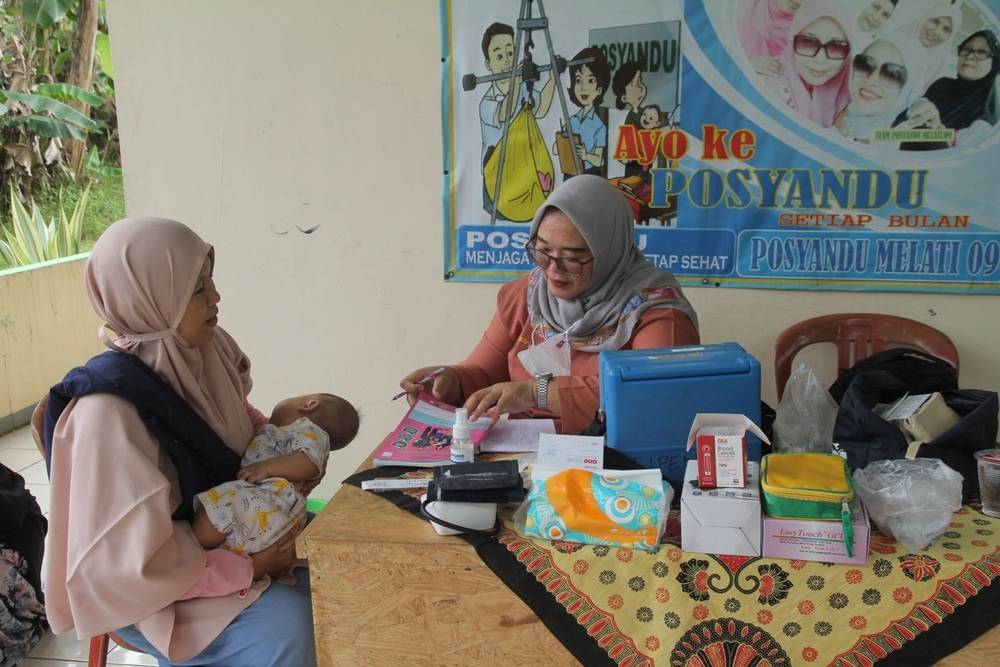Cervical cancer is preventable with early detection & education. However, nearly 60% of global cases occur in Asia. Therefore, more needs to be done.
Cervical cancer remains a significant public health concern for women across Asia, with a disproportionately high burden compared to other regions. Early detection and prevention efforts are crucial in tackling this issue.
High Cervical Canccer Prevalence in Asia
According to the World Health Organization (WHO) in 2020, cervical cancer ranks as the fourth most common cancer among women globally, with an estimated 351,720 new cases diagnosed annually in Asia alone. This translates to roughly 59% of all such cases worldwide occurring in this region.
Southeast Asia has one of the higher incidence rates of cervical cancer globally, although there is significant variation among countries within the region. Vietnam, Thailand, and Indonesia reported three of the higher incidence rates. For example, Thailand has an incidence rate of approximately 15.2 per 100,000 women.
Mortality rates also vary, but they tend to be higher in countries with less access to screening and vaccination programs. In Indonesia, the mortality rate due to cervical cancer is notably high, reflecting challenges in early detection and access to care.
Several factors contribute to this high prevalence. Limited access to screening and vaccination programs, along with cultural stigmas surrounding reproductive health discussions, act as significant barriers. Additionally, inadequate healthcare infrastructure, particularly in rural areas, further hinders early detection and treatment options.
Importance of Early Detection and Prevention
The good news is that cervical cancer is highly preventable and treatable when detected early. Regular screening through Pap smears or HPV testing allows for precancerous changes to be identified and addressed before they develop into invasive cancer.
Vaccination against the Human Papillomavirus (HPV) is another crucial prevention strategy. This is because HPV is the primary cause related to this cancer. HPV vaccines are safe and effective, offering significant protection against the strains responsible for most cervical cancers.
Challenges and Opportunities
Despite progress in implementing screening programs and HPV vaccination initiatives, challenges remain. Low awareness about cervical cancer and the benefits of screening persists in many Asian communities.
Cultural taboos surrounding cervical health can also deter women from seeking preventive care. Furthermore, ensuring equitable access to affordable screening and vaccination programs across all socioeconomic backgrounds remains an ongoing effort.
Empowering Women Through Cervical Cancer Education
Educational campaigns that address cultural sensitivities and provide accurate information about cervical cancer are essential. These initiatives can empower women to take control of their health and make informed decisions about screening and vaccination.
Governments and healthcare organizations across Asia have a vital role to play. Strengthening healthcare systems, investing in infrastructure, and training healthcare professionals are crucial steps. Additionally, subsidizing screening and vaccination programs for low-income communities can significantly improve accessibility.
Conclusion
By prioritizing women’s health, promoting education and awareness, and ensuring equitable access to preventive measures, Asia can make significant strides towards eliminating cervical cancer as a public health threat.
Working together, stakeholders can empower women to protect themselves from this preventable disease.
References:
[1] HPV Information Centre. Human Papillomavirus and Related Diseases Report ASIA. https://hpvcentre.net/statistics/reports/XWX.pdf
[2] World Health Organization. https://www.who.int/data/gho/indicator-metadata-registry/imr-details/3240
[3] World Health Organization. https://www.who.int/health-topics/cervical-cancer
[4] World Health Organization. Human papillomavirus (HPV) and cervical cancer. https://www.who.int/health-topics/cervical-cancer
[5] UN Women Asia and the Pacific. Cervical Cancer Elimination in Asia-Pacific: Country Reviews & Roadmaps for Action. https://asiapacific.unfpa.org/en/cervical-cancer-elimination-asia-pacific-country-reviews-roadmaps-action
[6] Roy Chaudhury, M., et al. (2020). Knowledge, attitude, and practices regarding cervical cancer screening among women in low-and middle-income countries: A systematic review. Journal of Cancer Research and Therapeutics, 16(2), 481-489. https://www.ncbi.nlm.nih.gov/pmc/articles/PMC4518402/
[7] World Health Organization. Global Strategy to accelerate the elimination of cervical cancer as a public health problem. https://www.who.int/publications-detail-redirect/9789240014107
[8] World Health Organization. Investing in women’s health: The case for cervical cancer prevention. https://pubmed.ncbi.nlm.nih.gov/28691328/












